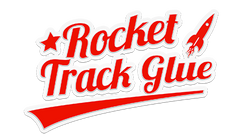
Drag Racing Engines: Building and Tuning
In drag racing, a high-performance engine is essential for achieving top speeds and winning races. Engine building and tuning are two key components of drag racing that can make all the difference in terms of performance. In this blog, we'll explore some of the key aspects of engine building and tuning in drag racing.
Engine Building
Building a high-performance engine for drag racing requires a deep understanding of engine mechanics and a lot of attention to detail. Engine builders must carefully select and match components to create an engine that is powerful, reliable, and efficient.
Some of the key components that engine builders focus on include:
-
Camshaft: The camshaft controls the opening and closing of the engine's valves, which in turn controls the amount of air and fuel that enters the combustion chamber. Camshafts are available in a wide range of profiles and can be custom-ground to match the specific needs of the engine.
-
Cylinder heads: The cylinder heads sit on top of the engine block and contain the valves, valve springs, and other components. Choosing the right cylinder heads can make a big difference in terms of airflow and power.
-
Pistons: Pistons are responsible for converting the energy from the fuel into motion. High-performance pistons are made from stronger materials and may feature custom shapes or coatings to reduce friction and increase power.
-
Intake manifold: The intake manifold is responsible for delivering air and fuel to the engine. Choosing the right intake manifold can help optimize airflow and improve performance.
Tuning
Once the engine is built, tuning is the process of optimizing the engine's performance by adjusting various components and settings. Tuning can involve making adjustments to the fuel injection system, ignition timing, and other key components to achieve the best possible performance.
Some of the key factors that tuners focus on include:
-
Air/fuel ratio: The air/fuel ratio is the amount of air and fuel that enters the engine. A lean mixture can cause the engine to run hot and increase the risk of damage, while a rich mixture can reduce power and waste fuel.
-
Ignition timing: Ignition timing refers to the timing of the spark plug firing. Adjusting the timing can help optimize performance and reduce the risk of detonation.
-
Boost pressure: In turbocharged or supercharged engines, boost pressure can be adjusted to increase power output. However, too much boost can also increase the risk of engine damage.
Conclusion
Engine building and tuning are essential components of drag racing that can make all the difference in terms of performance. By carefully selecting and matching components, and then optimizing the engine's performance through tuning, racers can achieve faster speeds and win more races. However, building and tuning a high-performance engine is a complex and time-consuming process that requires a lot of knowledge and experience. As such, it's important to work with experienced professionals who can guide you through the process and help you achieve the best possible results.
New to drag racing? With Rocket Track Glue and Rocket Prep, racers can gain the advantage they need to win races and achieve better results on the drag strip.
